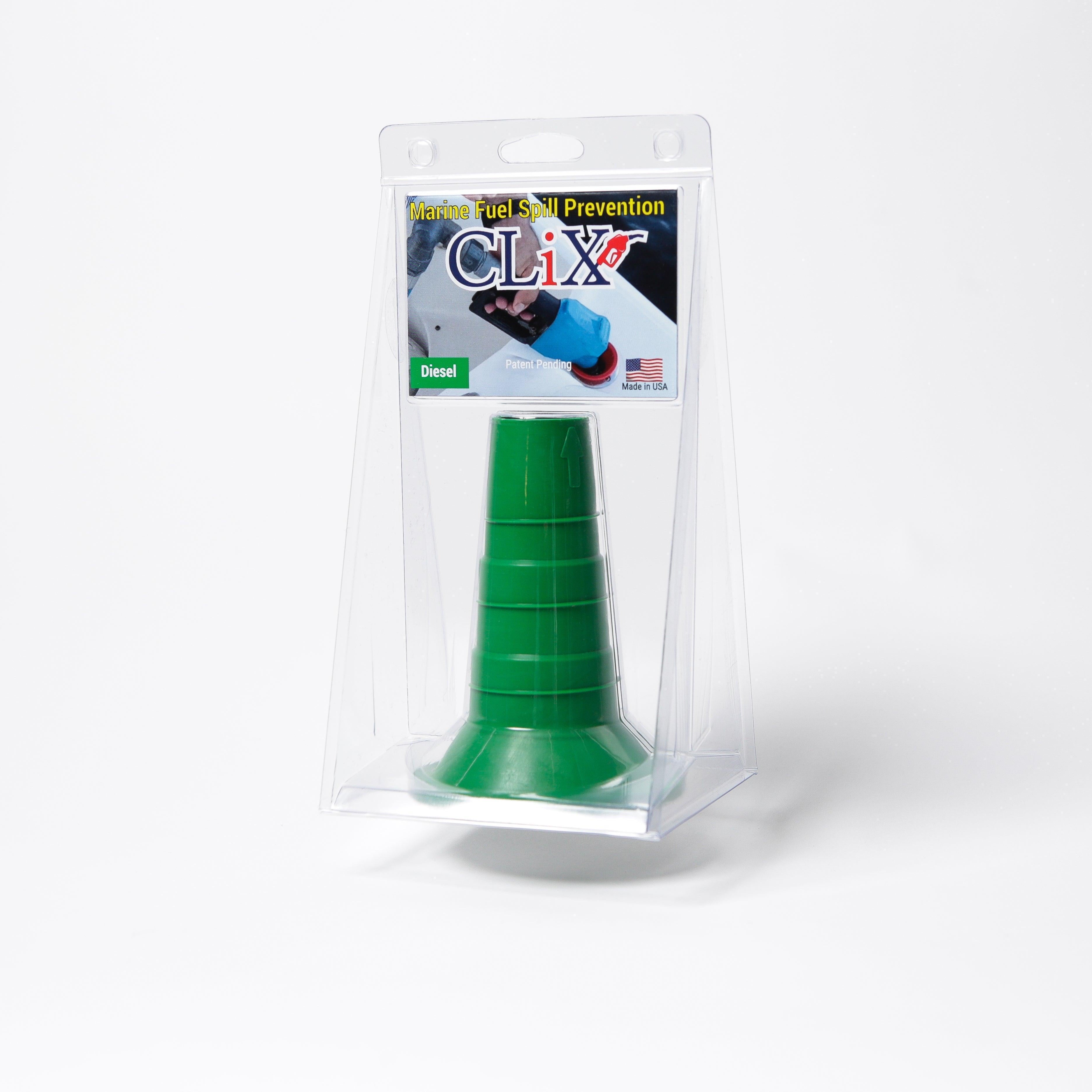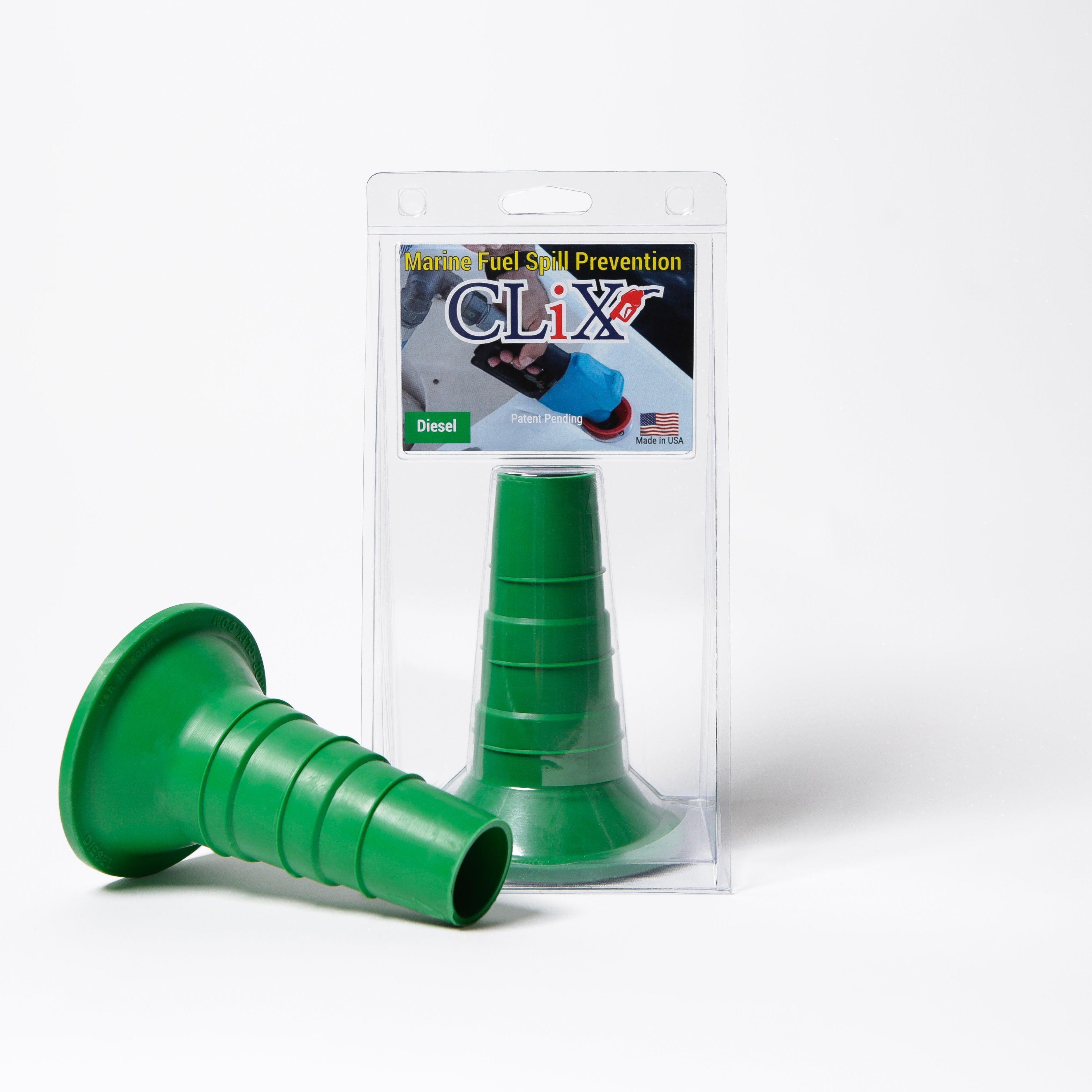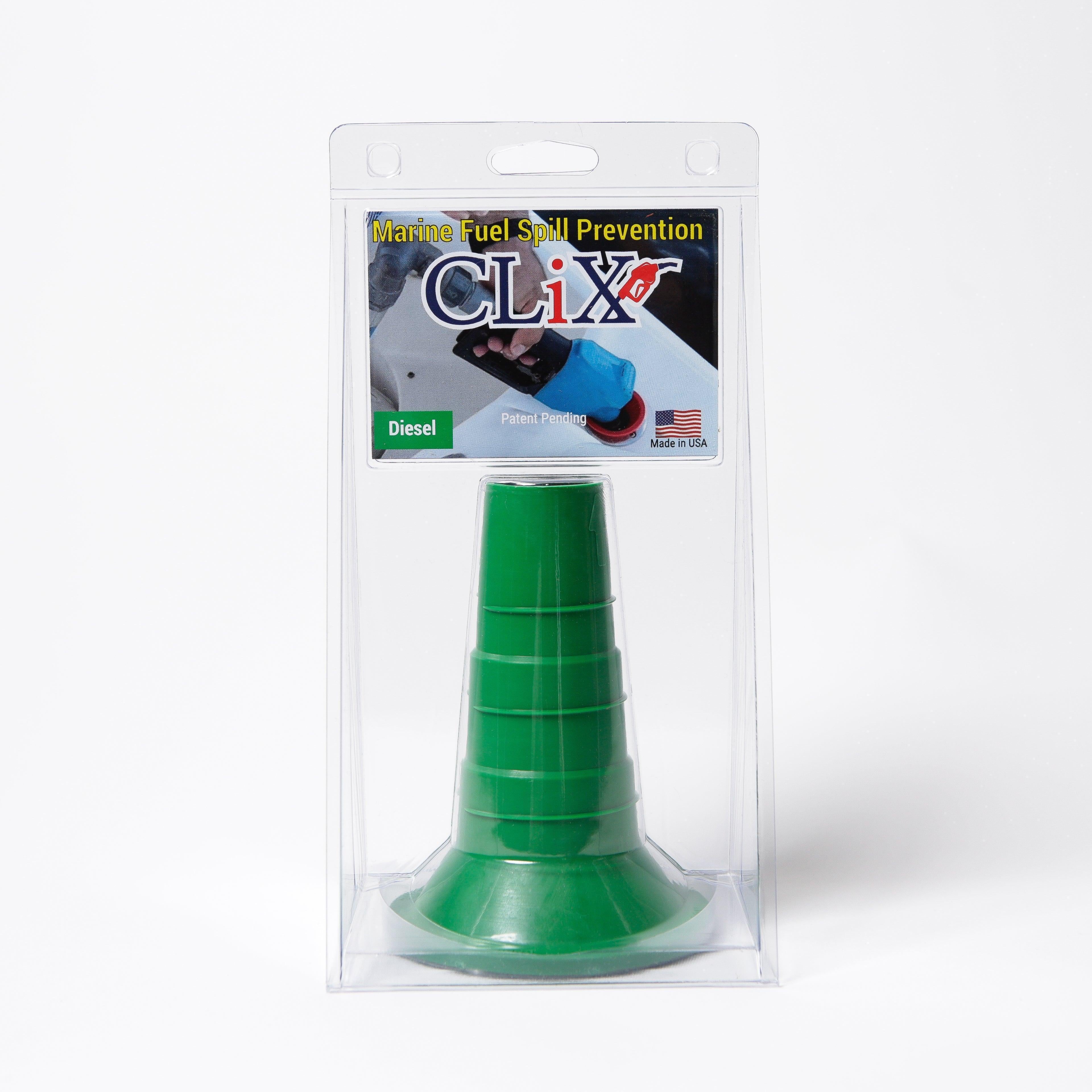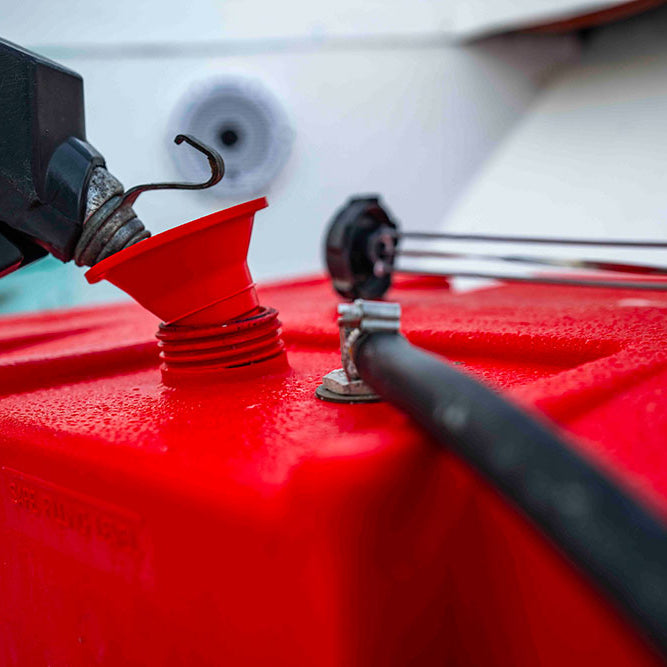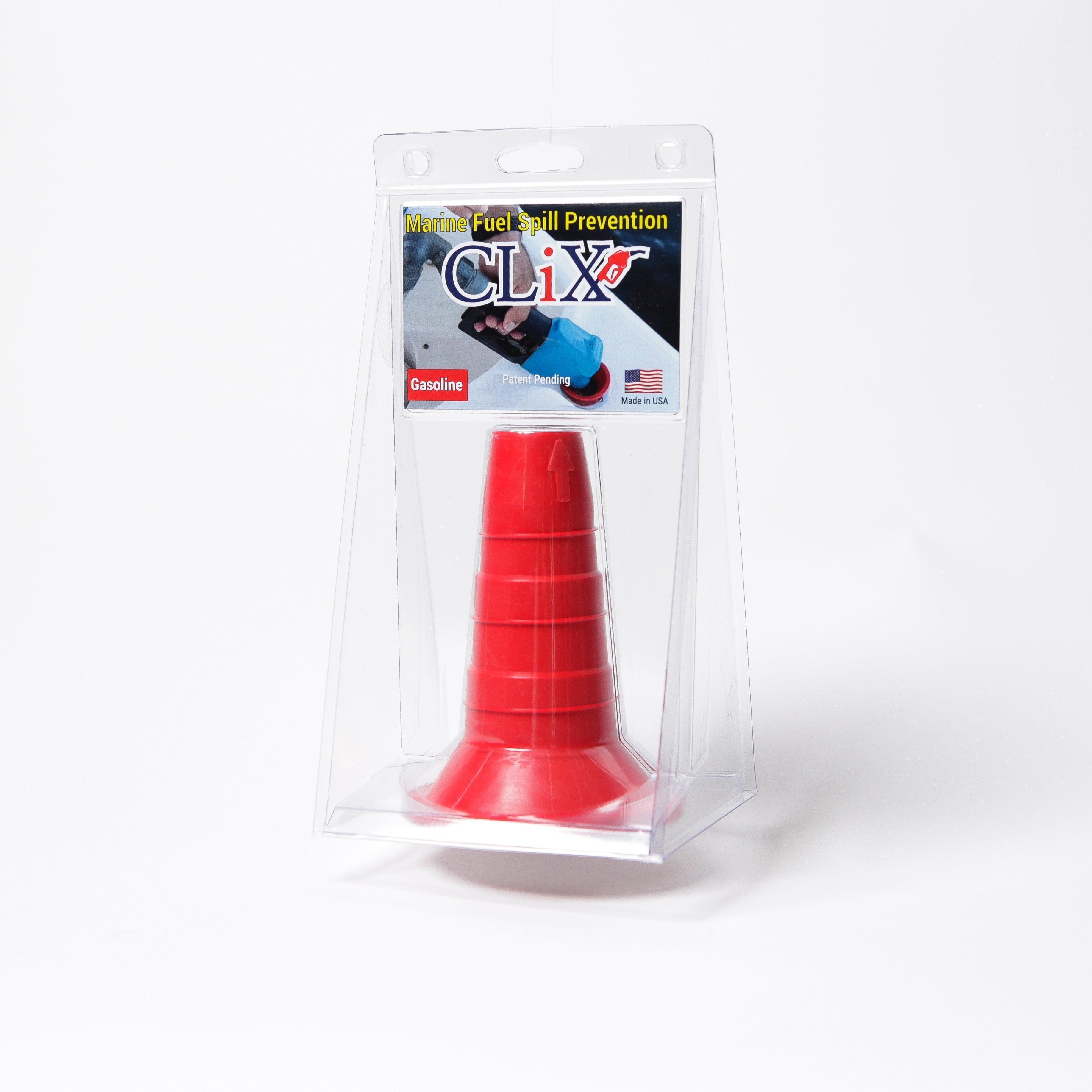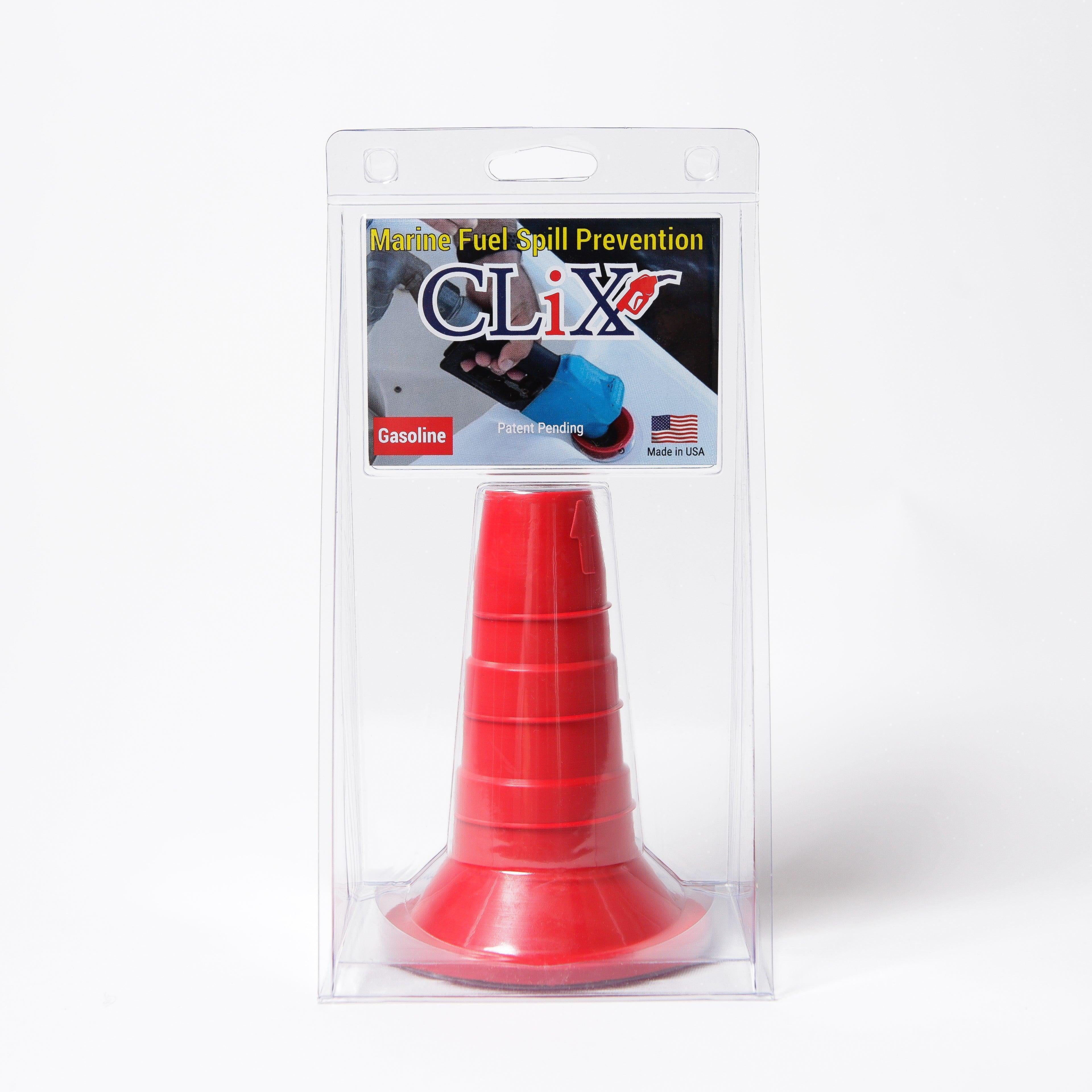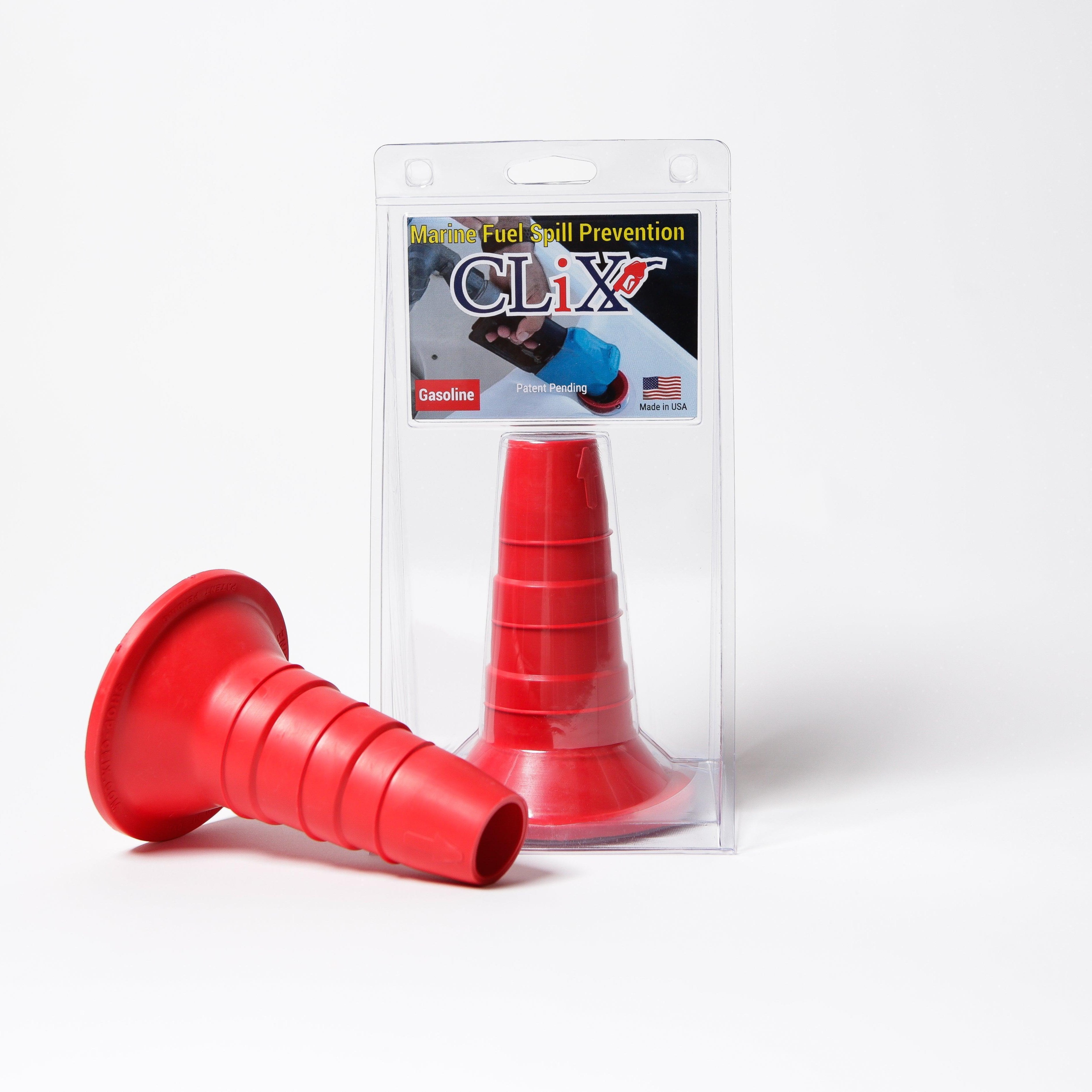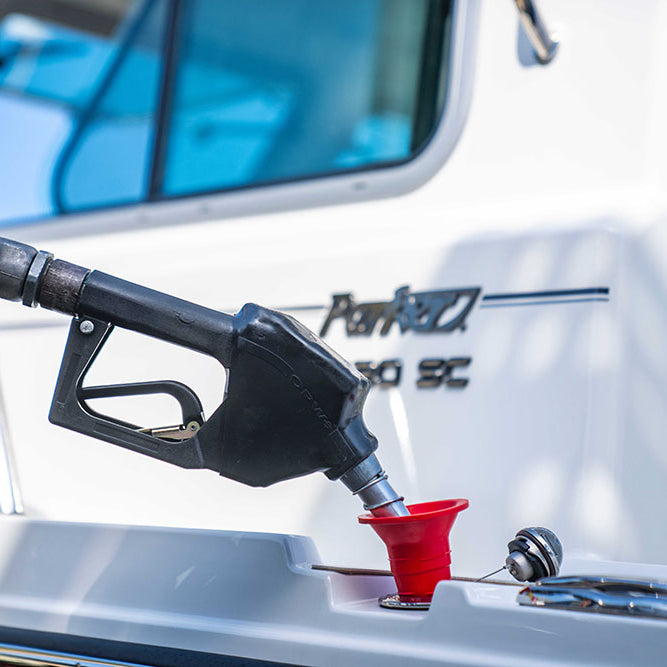Boating offers unparalleled freedom and adventure, but it also comes with inherent risks. From sudden weather changes to the routine task of fueling, every moment on the water requires awareness and preparation. Effective risk management strategies aren't just for commercial vessels; they're a crucial mindset for every recreational boater who wants to protect their investment, ensure the safety of their passengers, and preserve the marine ecosystems we all enjoy. For instance, managing passenger comfort is a key part of a safe and enjoyable trip; you can find effective strategies to prevent seasickness to help keep everyone at ease.
A significant, yet often overlooked, risk is fuel spillage during refueling. A single overfill can damage your boat's finish, pollute the water, and lead to costly fines. This is where modern solutions like CLiX Fueling Solutions and proactive strategies become indispensable. This guide cuts directly to the chase, providing a clear roadmap to better boating safety. We will explore 10 essential risk management strategies, offering actionable steps and practical examples to help you navigate with confidence. You will learn how to identify, assess, and control risks, with a special focus on mastering fueling safety and environmental protection.
1. Strategy 1: Risk Mitigation Through Proactive Equipment Upgrades
Risk mitigation is a core component of any effective risk management strategy, focusing on reducing the likelihood or severity of a negative event. For boaters, this means moving beyond routine maintenance and actively upgrading equipment to prevent common, high-impact problems before they can occur. Instead of simply reacting to issues like fuel spills or engine trouble, a proactive mitigation approach involves investing in modern technology that makes these incidents far less likely.
How to Implement This Strategy
Adopting this strategy is about identifying your vessel’s most significant vulnerabilities and seeking out technological solutions. It requires a forward-thinking mindset where you view equipment not just as functional parts but as active risk-reduction tools.
- Fuel System Upgrades: The fueling process is a major source of risk, from personal injury to environmental contamination. Traditional fuel caps and decks offer minimal protection against spills. Upgrading to a modern, integrated system like CLiX Fueling Solutions directly mitigates this risk. Its click-on, click-off mechanism creates a secure, sealed connection between the fuel nozzle and your boat’s deck fill, making accidental spills virtually impossible.
- Automated Systems: Install automatic bilge pumps with high-water alarms or smart engine monitoring systems that alert you to potential issues before they become critical failures at sea.
Key Insight: Proactive upgrades are not an expense; they are an investment in safety, environmental responsibility, and peace of mind. By addressing potential failures at the source, you fundamentally lower your risk profile on the water. This approach is essential for any boater serious about comprehensive risk management strategies.
2. Risk Mitigation
Risk mitigation is one of the most fundamental risk management strategies, involving the implementation of controls and procedures to reduce the likelihood of a risk occurring or to minimize its impact. Rather than trying to eliminate every possible threat, which is often impractical, mitigation focuses on managing risks down to an acceptable, controlled level. This allows boaters to operate confidently, knowing safeguards are in place.

How to Implement This Strategy
Implementing risk mitigation requires a systematic approach to identifying potential hazards and deploying specific countermeasures. It is about being proactive, not reactive, and integrating safety protocols into your standard operating procedures on the water.
- Develop Emergency Procedures: Create and practice clear, simple procedures for common emergencies like fire, man overboard, or engine failure. Having a rehearsed plan dramatically reduces panic and improves response effectiveness.
- Implement Layered Defenses: Do not rely on a single solution. For fuel spill prevention, you might use a CLiX system for secure fueling, keep absorbent pads nearby, and conduct regular fuel line inspections. Each layer provides backup if another fails.
- Employee and Crew Training: Ensure everyone on board, from family to crew, understands safety protocols, the location of safety gear, and their role in an emergency. Consistent training is a powerful mitigation tool.
Key Insight: Effective mitigation isn't about avoiding the water; it's about building a resilient boating practice. By layering procedural, training, and equipment-based controls, you create a robust safety net that makes your time on the water significantly safer and more predictable.
3. Strategy 3: Risk Transfer Through Insurance and Contracts
Risk transfer is a fundamental pillar of risk management strategies where you shift the financial burden of a potential loss to another party. For boaters, this doesn't eliminate the risk itself, but it protects you from the potentially catastrophic financial fallout. Instead of bearing the full cost of an accident, theft, or environmental incident, you transfer that financial responsibility to an entity better equipped to handle it, most commonly an insurance company.

How to Implement This Strategy
Implementing risk transfer means securing the right protections and formalizing agreements that legally assign liability elsewhere. It’s a strategic move to insulate yourself from worst-case scenarios, from liability claims to total vessel loss. This requires more than just a basic policy; it demands a clear understanding of what you’re protecting against.
- Comprehensive Marine Insurance: Obtain a robust boat insurance policy that covers not only physical damage to your vessel (hull insurance) but also liability for bodily injury, property damage, and pollution. Pay close attention to coverage for fuel spills, as cleanup costs can be exorbitant.
- Contractual Agreements: When using professional services like a boatyard for repairs or a captain for hire, ensure your contract clearly outlines their liability and insurance requirements. This transfers risk associated with their workmanship or negligence directly to them.
Key Insight: Risk transfer via insurance is your financial safety net. While proactive upgrades like a CLiX system prevent spills, a strong insurance policy ensures that if the unexpected still happens, the financial consequences won't sink you. It's an indispensable component of a layered risk management plan.
4. Strategy 4: Risk Acceptance Through Informed Decision-Making
Risk acceptance is a conscious and strategic decision to bear the consequences of an identified risk without implementing additional control measures. This approach is not about ignoring danger; it is one of the most practical risk management strategies when the cost of mitigation outweighs the potential impact. For boaters, this means understanding which minor, low-impact risks are simply part of the on-water experience and can be managed without significant investment or action.
How to Implement This Strategy
Implementing risk acceptance requires a clear-eyed assessment of your vessel’s operations and your personal risk tolerance. It involves formally acknowledging a risk and accepting its potential outcome, freeing up resources to focus on more critical threats.
- Minor Cosmetic Damage: Accepting the risk of small scuffs or scratches on the hull or rub rail from routine docking is a common example. The cost and effort to prevent every minor blemish often exceed the actual impact, making acceptance a logical choice.
- Non-Critical Equipment Failure: A boater might accept the risk of a non-essential cabin light or a secondary, redundant GPS unit failing. While inconvenient, these events do not compromise the vessel’s immediate safety or operational integrity.
Key Insight: True risk acceptance is an active choice, not a passive oversight. By deliberately accepting minor, well-understood risks, you can allocate your time, money, and attention to mitigating high-consequence dangers, such as fuel spills or engine failure, creating a more effective overall risk management framework.
5. Strategy 5: Diversification of Onboard Resources and Routes
Diversification is a powerful risk management strategy that involves spreading dependencies across multiple points to minimize the impact of a single failure. For boaters, this doesn't just mean financial investments; it applies directly to onboard systems, supplies, and even navigational plans. The core principle is avoiding a single point of failure, ensuring that if one system or plan fails, you have alternatives ready to go. This prevents a minor issue from escalating into a major emergency.

How to Implement This Strategy
Implementing diversification on your vessel means building redundancy and flexibility into your operations. It’s about thinking “what if?” and preparing a backup for critical functions, ensuring you are never entirely reliant on one piece of equipment or one course of action.
- Navigational Systems: Don't rely solely on a single GPS chartplotter. Supplement it with a separate, handheld GPS, navigation apps on a tablet or phone, and always carry updated paper charts for your cruising area. This ensures that an electrical failure or device malfunction doesn't leave you lost.
- Essential Supplies: Carry redundant safety and communication gear. This includes having a fixed-mount VHF radio backed up by a handheld VHF, and multiple types of visual distress signals (flares, strobes, flags). The same logic applies to having extra fuel filters or a spare anchor.
Key Insight: Diversification transforms your vessel from a chain of single-point dependencies into a resilient, layered system. By building in redundancy for critical equipment and plans, you significantly enhance your ability to manage unexpected events and maintain control, making it a cornerstone of effective risk management strategies on the water.
6. Strategy 6: Developing a Robust Contingency Plan
Contingency planning is a forward-thinking risk management strategy where you create detailed response plans for potential emergencies before they happen. It’s about answering the question, "What will we do if something goes wrong?" For boaters, this means having a clear, predetermined set of actions for scenarios ranging from a man overboard to a critical fuel spill, ensuring a calm, swift, and effective response instead of a panicked reaction.
How to Implement This Strategy
Effective contingency planning involves identifying potential risks specific to your boating activities and developing clear, actionable steps for each. This isn't just a mental exercise; it's about creating documented procedures that can be executed under pressure.
- Create Scenario-Specific Drills: Don't just think about what you would do; practice it. Run drills for a fire on board, a medical emergency, or losing engine power. Involve everyone who regularly boats with you so they know their roles.
- Establish a Fuel Spill Response Protocol: A fuel spill is a high-stakes event with environmental and financial consequences. Your plan should include immediate steps like stopping the source, containing the spill with absorbent pads, and notifying the authorities. For a comprehensive guide, you can create a detailed Fuel Spill Response Plan.
- Assemble Emergency Kits: Go beyond the basic first-aid kit. Have a dedicated "ditch bag" with an EPIRB, handheld VHF, flares, and water. Keep a spill kit with absorbent materials, gloves, and disposal bags readily accessible near your fueling port.
Key Insight: A well-rehearsed contingency plan transforms a potential crisis into a manageable incident. By preparing for the worst, you empower yourself and your crew to act decisively and correctly, significantly minimizing the impact of any emergency on the water. This is a critical component of any serious risk management strategy.
7. Risk Monitoring and Early Warning Systems
Effective risk management strategies don't end after you've identified a threat; they require ongoing vigilance. Risk monitoring involves continuously tracking key indicators to detect changes in your risk profile and provide an early warning of potential issues. For boaters, this means using technology and systematic observation to stay ahead of emerging threats, whether they are mechanical, environmental, or operational. This proactive approach allows you to shift from reacting to crises to responding intelligently before they escalate.
How to Implement This Strategy
Implementing a monitoring strategy involves identifying what to watch and establishing clear protocols for when a threshold is crossed. It’s about creating a system that automatically flags potential dangers, giving you the time needed to act.
- Engine and Systems Monitoring: Modern marine electronics can do far more than just navigate. Install smart engine monitoring systems that track temperature, oil pressure, and fuel flow in real-time. Set alerts for when these metrics deviate from normal operating ranges, giving you an early warning of a potential failure long before it becomes critical.
- Weather and Environmental Tracking: Use advanced weather apps and onboard systems that provide real-time data on wind shifts, storm cells, and sea state changes. Setting custom alerts for specific conditions, like wind speeds exceeding 20 knots, ensures you are never caught unprepared by a sudden squall.
- Fuel Consumption Analysis: Regularly track your fuel consumption against engine hours. A sudden increase in fuel usage can be a leading indicator of an engine problem, a fouled hull, or an issue with your propeller. This simple monitoring task is a powerful tool for one of the most vital risk management strategies on a boat.
Key Insight: Continuous monitoring transforms risk management from a passive checklist into an active, dynamic process. By leveraging early warning systems, you gain the crucial advantage of time, enabling you to make informed decisions that prevent minor issues from becoming major emergencies on the water.
8. Strategy 8: Scenario Planning and Stress Testing
Effective risk management strategies go beyond reacting to current problems; they involve anticipating future challenges. Scenario planning and stress testing are advanced methods for doing just that, helping boaters and marina operators analyze how they would perform under various adverse conditions. This forward-looking approach helps identify vulnerabilities and tests the adequacy of existing plans by exploring "what if" situations, from sudden severe weather to equipment failure in a crowded channel.
How to Implement This Strategy
Implementing this strategy means moving from a passive to an active mindset. It involves systematically imagining potential crises and evaluating your readiness to handle them. For boaters, this isn't about paranoia; it's about building resilience and confidence for when things go wrong.
- Develop Realistic Scenarios: Don't just plan for a dead battery. Consider more complex situations. What if your engine fails while approaching a busy fuel dock? What is your plan if a major fuel spill occurs despite your best efforts? Or what if a sudden squall disables your navigation equipment? Document a step-by-step response for each.
- Stress Test Your Response: Once you have a scenario, "walk through" your response. Do you have the necessary tools, contact numbers, and skills? For a fuel spill scenario, do you have a spill kit, and does everyone on board know how to deploy it? This practice run will reveal gaps in your planning.
Key Insight: Scenario planning transforms abstract risks into concrete challenges you can prepare for. By stress testing your response plans on paper or in a controlled setting, you build the muscle memory and clarity needed to act decisively and correctly during a real emergency, which is a cornerstone of any robust risk management strategy.
9. Strategy 9: Establish a Strong Risk Culture and Governance
Effective risk management is not just about tools and procedures; it is about embedding a risk-aware mindset into the very fabric of an organization or even a family boating unit. This foundational strategy, known as risk culture and governance, establishes the shared values, processes, and attitudes that ensure everyone understands their role in identifying and managing potential threats. For marinas, boat clubs, or even individual boaters, it means making safety and preparedness a collective responsibility.
How to Implement This Strategy
Implementing a strong risk culture involves creating a clear framework where safety is prioritized in all decisions. It’s about moving from a reactive "fix-it-when-it-breaks" mentality to a proactive culture where potential issues are constantly considered and addressed by everyone involved.
- Lead by Example: Whether you are a marina operator or the captain of your vessel, your actions set the tone. Consistently using safety gear, following proper fueling protocols, and openly discussing potential hazards demonstrates that you take risk management seriously.
- Clear Communication and Training: Regularly hold safety briefings before heading out on the water. For a commercial operation, this includes formal training on emergency procedures, spill response, and equipment use. This ensures everyone knows what to do when a risk materializes. You can learn more about how to improve a safety culture to foster a more resilient environment.
- Integrate Risk Into Decision-Making: Embed safety checks into routine activities. For instance, make a pre-departure checklist a non-negotiable step, or integrate a spill-proof system like CLiX into your standard fueling procedure to eliminate a common environmental and safety risk.
Key Insight: A robust risk culture transforms risk management from a task on a checklist into a shared value. When everyone from the dockhand to the captain is actively engaged in identifying and mitigating risks, the entire operation becomes inherently safer and more resilient against unforeseen events.
10. Strategy 10: Adopting an Enterprise Risk Management (ERM) Framework
Enterprise Risk Management (ERM) is a comprehensive, integrated approach to managing all types of risks across an entire operation. While often associated with large corporations, its principles offer immense value to any boating business, from a multi-location marina to a charter fleet. ERM provides a top-down framework for identifying, assessing, and managing risks in a coordinated manner, ensuring that all risk management strategies support overarching strategic objectives like safety, profitability, and environmental stewardship.
How to Implement This Strategy
Implementing ERM means shifting from a siloed view of risk (e.g., fuel spills, engine failure, weather) to a holistic one. It requires a commitment from leadership to embed risk awareness into the entire operational culture, connecting every action back to the big picture.
- Establish a Risk Committee: Form a small, dedicated team responsible for overseeing the risk landscape. This group should identify all potential risks, from financial and operational to reputational and environmental.
- Integrate with Business Processes: Don't treat risk management as a separate task. Weave it into existing processes like employee training, equipment purchasing, and marine fuel management. For example, when evaluating new equipment, a key criterion should be its ability to mitigate a known risk.
- Focus on Value Creation: Frame ERM not just as a compliance chore but as a tool for creating sustainable value. A well-managed risk profile can lower insurance premiums, prevent costly incidents, and enhance your reputation among customers.
The following concept map illustrates how ERM connects high-level strategy with practical risk assessment.
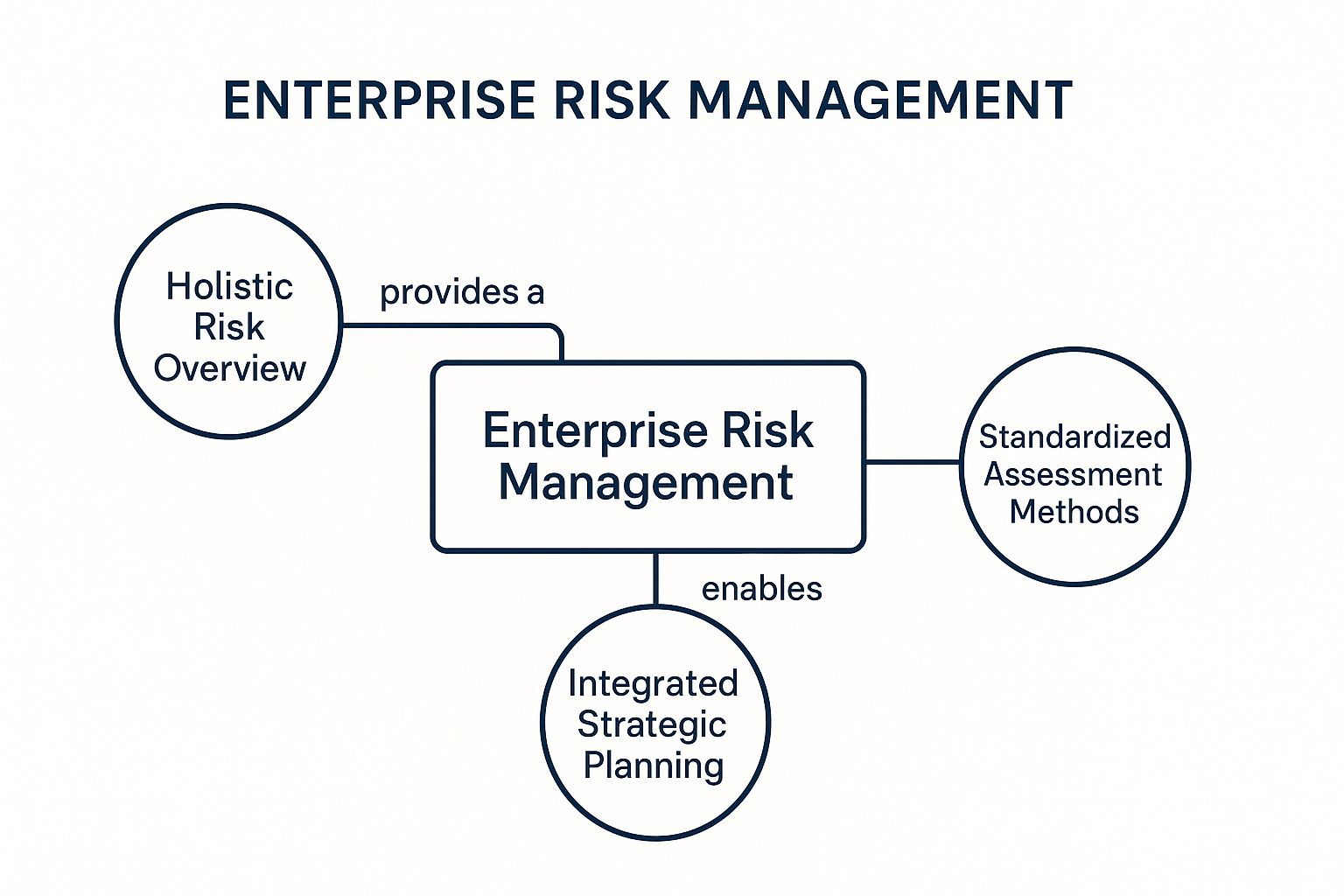 This visual highlights that ERM unifies strategic planning and standardized assessment methods to create a complete and actionable overview of all potential risks.
This visual highlights that ERM unifies strategic planning and standardized assessment methods to create a complete and actionable overview of all potential risks.
Key Insight: ERM transforms risk management from a reactive, piecemeal activity into a proactive, strategic function. By viewing the entire operation through a risk lens, you can make more informed decisions, allocate resources effectively, and build a more resilient and successful boating enterprise.
Risk Management Strategies Comparison
| Strategy | Implementation Complexity 🔄 | Resource Requirements ⚡ | Expected Outcomes 📊 | Ideal Use Cases 💡 | Key Advantages ⭐ |
|---|---|---|---|---|---|
| Risk Avoidance | High - requires strategic planning and analysis | Moderate - thorough risk assessment | Complete elimination of risk exposure | High-impact, low-control risks where alternatives exist | 100% protection from identified risks; simplifies operations |
| Risk Mitigation | Moderate - layered controls and ongoing updates | Moderate - investment in controls | Reduced risk probability or impact; balanced risk and opportunity | Situations needing continued operations with managed risk | Flexible, cost-effective, enables competitive advantage |
| Risk Transfer | Moderate - contractual arrangements needed | Variable - premium or fee payments | Shifts financial risk while maintaining operational control | Risks with financial consequences manageable by third parties | Financial protection without operational limits; predictable costs |
| Risk Acceptance | Low - conscious decision without controls | Low - no additional controls | Bear full risk consequences; potential cost savings | Low-impact or cost-ineffective-to-treat risks | Simplifies decision-making; maximizes opportunity capture |
| Diversification | Moderate - requires portfolio management skills | Moderate to high - managing exposures | Reduced overall risk through spread; balanced portfolios | Multiple asset classes, markets, or geographies | Reduces volatility and concentration risk; stable performance |
| Contingency Planning | High - detailed response and backup plans | High - resource allocation and training | Rapid risk response; minimized disruption | Risks requiring predefined responses and recovery | Minimizes downtime; builds stakeholder confidence |
| Risk Monitoring & Early Warning | High - continuous tracking and tech integration | High - technology and skilled staff | Early risk detection; proactive management | Dynamic environments needing real-time risk insight | Enables timely actions; improves risk visibility |
| Scenario Planning & Stress Testing | High - analytical and expert input required | High - analytical tools and expertise | Identification of vulnerabilities; improved preparedness | Strategic planning under uncertain or extreme conditions | Tests controls; informs resource and capital planning |
| Risk Culture and Governance | High - organizational change and ongoing effort | Moderate to high - training and oversight | Organization-wide risk awareness; consistent risk handling | All organizations aiming for embedded risk management | Enhances compliance; builds risk-aware culture |
| Enterprise Risk Management (ERM) | Very High - enterprise-wide integration | Very High - systems, training, commitment | Holistic risk view; integrated management supporting strategy | Large organizations managing diverse risk portfolios | Comprehensive risk oversight; better decision-making |
Your Safest Voyage is a Well-Planned One
Navigating the open water is an exercise in freedom, but true freedom is built on a foundation of preparedness and control. Throughout this guide, we've explored ten powerful risk management strategies, moving beyond simple reaction to a proactive framework of awareness and mitigation. From strategically avoiding unnecessary hazards to transferring specific risks through insurance and establishing robust contingency plans, you now have a comprehensive toolkit to safeguard your vessel, your crew, and the pristine marine environment you cherish.
The core lesson is that effective risk management is not a restrictive set of rules; it's an empowering mindset. It's about understanding that you are the captain of not just your boat, but also of the risks you encounter. Implementing these strategies transforms your entire boating experience. The anxiety of potential spills, equipment failure, or sudden weather changes is replaced by the quiet confidence that comes from having a plan for every realistic possibility. This confidence allows you to fully immerse yourself in the joy of the journey.
Turning Knowledge into Actionable Habits
The true value of these risk management strategies lies in their consistent application. Merely knowing about risk mitigation or scenario planning is not enough. The goal is to integrate these concepts into your pre-launch routine, your on-the-water decision-making, and your post-trip maintenance.
Here are your actionable next steps:
- Conduct a Self-Audit: Review your current practices against the ten strategies discussed. Where are your strengths? Where are the gaps? Start with the areas of greatest vulnerability, such as your fueling process or emergency protocols.
- Implement One New Strategy: Don't try to do everything at once. Choose one strategy to master this month. For example, focus on Risk Mitigation by upgrading your fueling equipment to a spill-proof system like the one offered by CLiX. This single change drastically reduces the risk of costly and harmful fuel spills.
- Formalize Your Plans: Take your contingency and scenario plans from mental notes to written documents. A clear, documented plan is far more reliable in a high-stress situation. As you finalize your plans, ensuring your vessel meets all safety requirements is crucial; leverage our comprehensive guide to New Zealand waters to review the ultimate boat safety checklist for NZ waters.
By embracing a culture of safety and preparedness, you are not just protecting your investment. You are becoming a steward of the waterways, ensuring they remain a source of adventure and beauty for future generations. Your commitment to sophisticated risk management strategies is the hallmark of a truly skilled and responsible mariner, making every voyage not just enjoyable, but exceptionally safe.
Ready to implement the ultimate risk mitigation strategy for fueling? Explore how CLiX Fueling Solutions can eliminate spills, protect the environment, and provide you with unmatched peace of mind at the pump. Visit CLiX Fueling Solutions to make your fueling process safer and smarter today.

